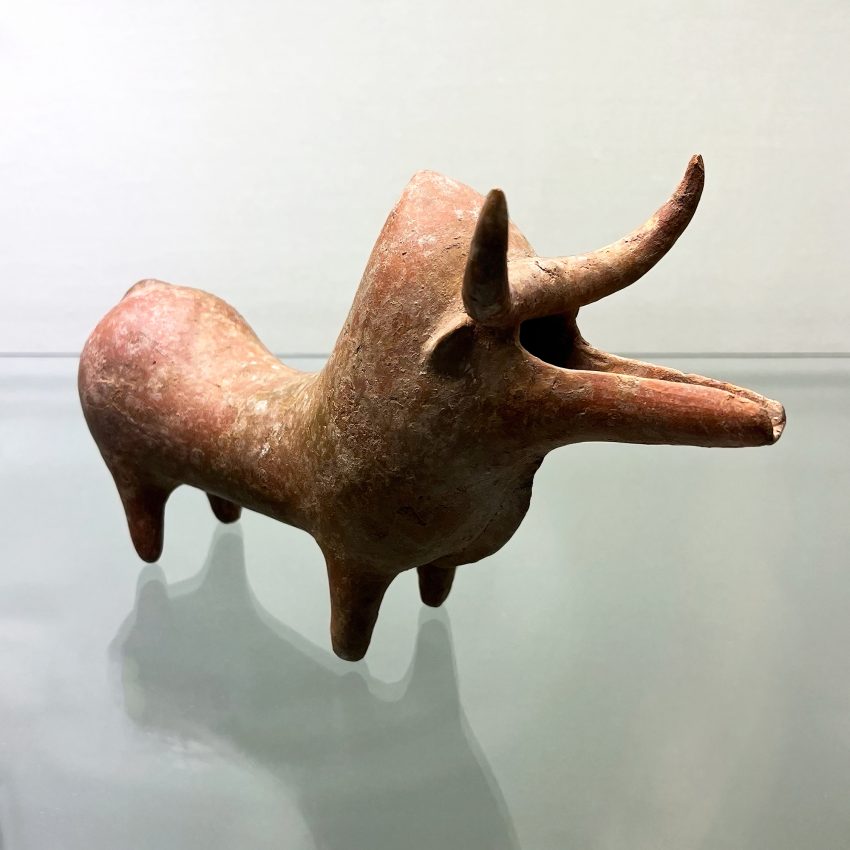
Aurochs vessels
. . . . . . . . .
Bovines consist of a diverse group of medium to large-sized “ungulates”, or hoofed animals, and the genus includes cattle, bison and buffalos. Bovines have always played a prominent role in the mythology of numerous cultures and are depicted as assorted deities in many religions, from central and southern Anatolia, the Indian subcontinent, Mesopotamia and its various cultures, and throughout the civilisations of classical antiquity in Greece, Crete, Rome and the Mediterranean Basin.
Interestingly, most but not all modern breeds of domesticated cattle are believed to have originated from the now extinct aurochs (Bos primigenius), which was found throughout Asia, North Africa and Europe, and as far north as Denmark and Sweden. The aurochs is rendered in various forms and manifestations in Neolithic petroglyphs, Egyptian reliefs, Bronze Age figurines and even in the Palaeolithic cave paintings of Lascaux in southern France.
Domestication of the aurochs occurred during the First Agricultural Revolution in the Fertile Crescent some 9,500 years ago. In the religions of the ancient Near and Middle East, it symbolised power, prowess and sexual potency, and its horns were used as votive offerings and trophies.
This wonderful example in the Hetjens Museum in Düsseldorf is a vessel from the Amlash area in modern-day northwestern Iran and dates to about 1,000 BCE.
. . . . . . . . .
Hetjens-Deutsches Keramikmuseum (German Ceramics Museum)
Schulstraße 4
40213 Düsseldorf